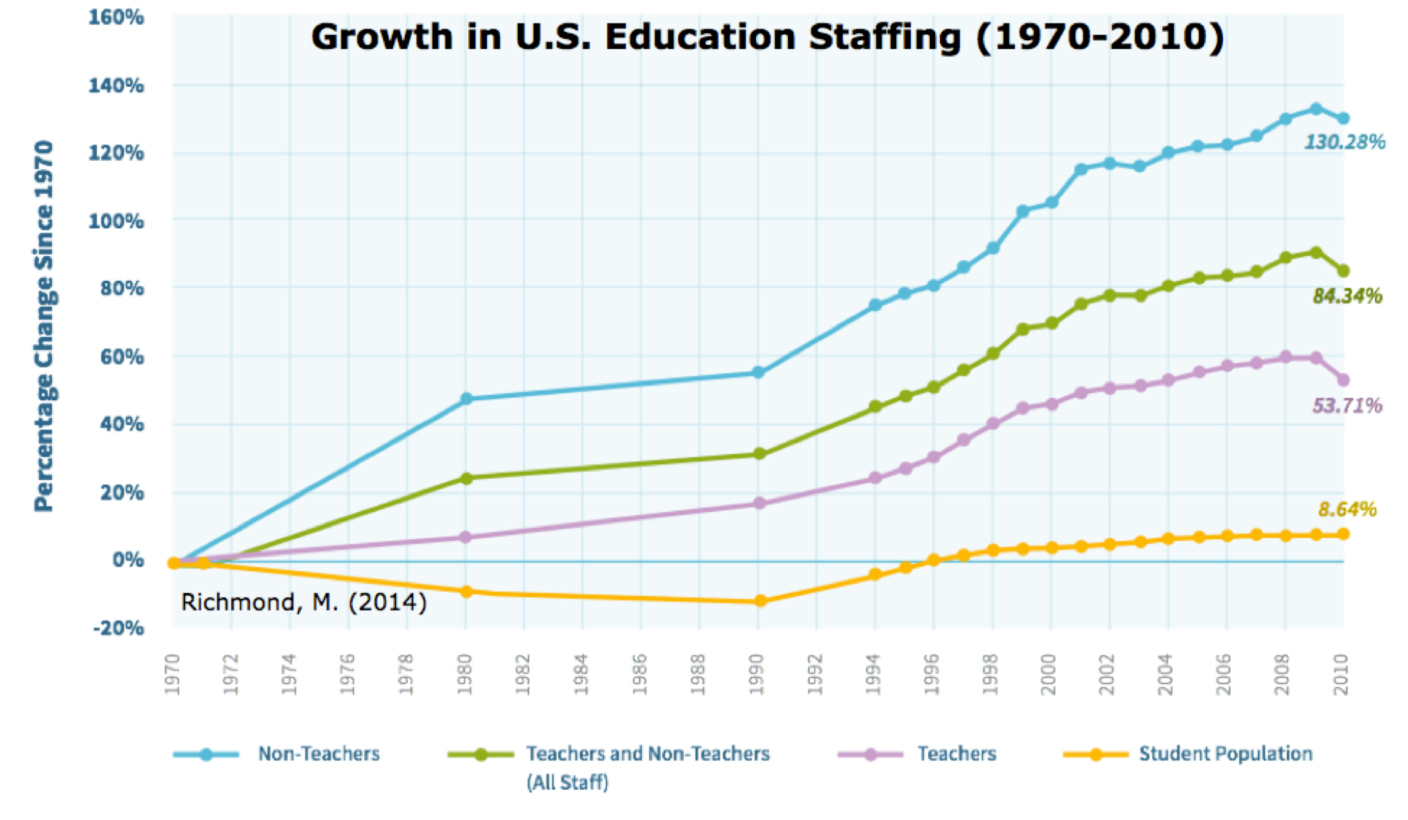Where Does the U.S. Spend Money on Education Staffing?
Why is this question important? Given the fact that teachers are the most important school variable related to improved student achievement, it is worthwhile to ask why the United States has invested more in non-teaching personnel and how this compares with other nations.
See further discussion below.

Source: The Hidden Half: School Employees Who Don't Teach
Results: Since 1970 the student-to-adult ratio in U.S. public schools shrank from 14 students to 1 adult to 8 students to 1 adult. A significant portion of this change is the result of class size reduction, which increased the number of teachers by 54%, and a reduction in student-to-teacher ratio from 22.6 to 16.0. More remarkably, our schools experienced an even more dramatic increase in non-teaching staff. During the same period this category rose by 130%. In comparison the United States spends more than double what Korea, Mexico, Finland, Portugal, Ireland, Luxembourg, Austria, and Spain does on non-teaching personnel.
Despite this increase in school personnel generally, American test scores, as measured by the National Assessment of Educational Progress (NAEP), remained flat. This lack of progress is in contrast to the academic success of other nations that maintained lower teacher to student ratios but invested their resources in finding better qualified teachers and paying teachers higher wages.
Implications: There are many ways for school systems to utilize human resources to teach students. There may be more effective and less effective methods for staffing schools to achieve better academic outcomes. This study suggests than we need more rigorous research to guide education policy makers in using limited dollars to achieve better results.
Authors: Matthew Richmond
Publisher: Thomas Fordham Institute
Study Description: This quantitative analysis of staffing drew from national (1950–2010), state (1986–2010), and district (1993–2010) data from the National Center for Education Statistics (both the Common Core of Data and the Digest of Education Statistics).
Definitions: Full-time equivalent (FTE): This represents an on-staff member working 100% time.
Related Research:
Citation: Richmond, M. (2014). The Hidden Half: School Employees Who Don't Teach. Thomas Fordham Institute.
